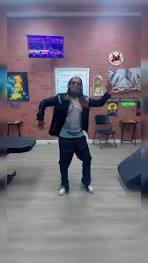The Hustle Dance: A Fun and Energetic Dance Style
The hustle dance is a lively and energetic partner dance that originated in the 1970s disco era. It is characterized by fast-paced movements, intricate footwork, and syncopated rhythms that make it a favorite among dancers of all ages.
One of the defining features of the hustle dance is its versatility. It can be danced to a variety of music genres, including disco, pop, and even contemporary hits. The dance is known for its flashy spins, turns, and dips that add excitement and flair to each performance.
Learning the hustle dance can be a fun and rewarding experience. It offers a great way to stay active, socialize with others, and express yourself through movement. Whether you’re a beginner or an experienced dancer, the hustle provides plenty of opportunities for creativity and self-expression on the dance floor.
Many dance studios and community centers offer hustle dance classes for individuals or couples looking to learn this dynamic style. These classes typically cover basic steps, partner connection, styling techniques, and musicality to help students feel confident and comfortable on the dance floor.
Whether you’re looking to pick up a new hobby, meet new people, or simply have fun dancing the night away, the hustle dance offers something for everyone. So put on your dancing shoes, grab a partner, and get ready to groove to the infectious beat of the hustle!
Everything You Need to Know About the Hustle Dance: Origins, Popularity, and Meaning
- What is the hustling dance?
- Where did the hustle dance originate?
- Do people still dance The Hustle?
- What was the most popular dance in the 70’s?
- Where did the Hustle dance originated?
- What does Hustle mean in dance?
What is the hustling dance?
The hustle dance, often referred to simply as “hustle,” is a lively and energetic partner dance that originated in the 1970s disco era. It is characterized by fast-paced movements, intricate footwork, and syncopated rhythms that make it a favorite among dancers of all ages. The hustle dance can be danced to a variety of music genres, including disco, pop, and contemporary hits, and is known for its flashy spins, turns, and dips that add excitement and flair to each performance. Whether you’re new to dancing or looking to expand your repertoire, learning the hustle can be a fun and rewarding experience that offers a great way to stay active, socialize with others, and express yourself through movement.
Where did the hustle dance originate?
The hustle dance originated in the 1970s disco era, particularly in the vibrant nightlife scene of New York City. It evolved from various partner dances like the Latin hustle and swing, blending elements of funk, soul, and disco music. The dance style gained popularity in clubs and discotheques, where dancers would showcase their fancy footwork and stylish moves to the upbeat rhythms of disco hits. Over time, the hustle dance spread across the United States and beyond, becoming a beloved dance style embraced by dancers of all backgrounds and skill levels.
Do people still dance The Hustle?
The hustle dance continues to be a popular and vibrant dance style enjoyed by many people around the world. While its peak popularity may have been during the disco era of the 1970s, the hustle has endured and evolved over the years, remaining a favorite among dancers of all ages. With its energetic movements, catchy music, and social nature, the hustle dance continues to attract enthusiasts who appreciate its fun and lively atmosphere. Whether at dance clubs, social events, or dance classes, people still embrace and enjoy dancing the hustle as a way to connect with others and express themselves through movement.
What was the most popular dance in the 70’s?
During the 1970s, one of the most popular dances was the hustle dance. Originating in the disco era, the hustle gained widespread popularity for its energetic and lively movements that perfectly complemented the vibrant music of the time. With its fast-paced footwork, flashy spins, and dynamic partner interactions, the hustle became synonymous with the glamorous and exhilarating dance scene of the 70s. Its versatility in adapting to various music genres made it a favorite choice for dancers looking to express themselves through movement and rhythm during this iconic decade.
Where did the Hustle dance originated?
The hustle dance originated in the 1970s in the vibrant disco scene of New York City. It evolved from various partner dances, including the Latin hustle and swing dances, and became popular in clubs and dance halls across the United States. The hustle’s energetic moves and catchy music captivated dancers, leading to its widespread adoption as a fun and stylish dance style that continues to be enjoyed by enthusiasts around the world today.
What does Hustle mean in dance?
In the context of dance, the term “Hustle” refers to a dynamic and energetic partner dance style that originated in the 1970s disco era. The Hustle dance is characterized by fast-paced movements, intricate footwork, and syncopated rhythms that create a lively and engaging dance experience. Dancers often perform flashy spins, turns, and dips while maintaining a strong connection with their partner. The term “Hustle” reflects the lively and spirited nature of this dance form, emphasizing the hustle and bustle of movement and rhythm on the dance floor.

